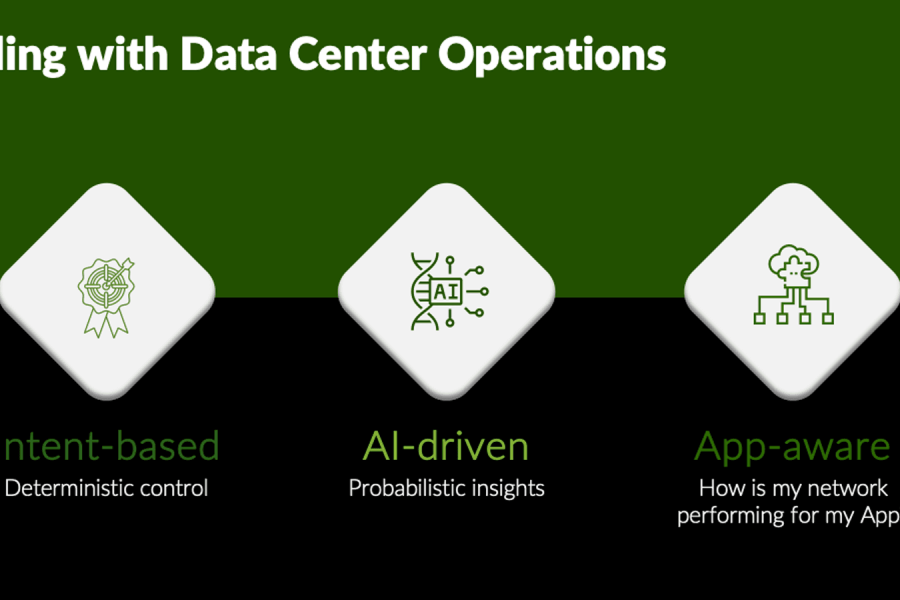The wide-area network (WAN) has been business-critical for decades, but in many ways, the architecture hasn’t changed dramatically – until recently. The shift to cloud application workloads is accelerating as enterprises look to move forward in a world transformed by the pandemic. To keep pace with this evolution, enterprises must deliver superior, secure digital experiences to customers, end users and employees wherever they’re located and from a mix of private and public cloud resources.
Today, the adage, “Those who cannot remember the past are condemned to repeat it,” continues to ring true. The need to deliver an optimized network user experience from end to end is creating change and innovation across the enterprise WAN. As this wave of innovation transforms the WAN, it’s critical to understand where it all began.
Before the 1990s
The first WANs were built to connect offices with terminals to mainframe and minicomputer systems. The design was simple: point-to-point connections from offices to data centers. The point-to-point architecture continued to serve the industry as users adopted personal computers and client-server applications. The X.25 protocol and T1/E1 circuits, operating at 1.5Mbps, became state-of-the-art for the WAN.
In the late 1980s and early 1990s, frame relay emerged as a more flexible way to connect offices and branch locations to the data center. As a simplified version of X.25, frame relay is a packet switched technology that ran over T1/T3 circuits. At the time, it offered blazing fast speeds of up to 45Mbps.
Organizations rapidly adopted frame relay, which was followed by Asynchronous Transfer Mode (ATM). ATM functions similarly to frame relay but ATM was designed to deliver a better experience for voice, video and data running over the same network. ATM offered loads of capacity —up to 622Mbps.
Early 2000s
In the 2000s, enterprises began using MPLS for their enterprise WANs. Today, MPLS continues to be the prevalent way to build large-scale enterprise WANs. MPLS was initially deployed by service providers that also adopted MPLS as they transitioned from traditional, circuit-based network architectures.
MPLS works a bit differently than conventional routing. Packets are assigned labels and forwarding decisions are made based on the label headers. With MPLS, enterprises could build a network that delivered end-to-end connectivity over any type of transport and using any type of network protocol.
With quality of service capabilities, a MPLS network could easily support many different types of applications or business unit traffic that needed to be separated. MPLS provided IT teams with far more flexibility and control over service quality than ever before.
Late 2000s
In the mid- to late 2000s, the internet exploded onto the scene as an option for enterprise WAN connectivity. Internet service providers offered a simple, affordable way to connect business locations as well as web sites. Internet bandwidth was cheap and plentiful, and available bandwidth was immediately consumed by users and applications in campus networks and remote offices.
But early ISPs didn’t deliver an enterprise-grade service. There was no way to guarantee the quality of service from the user in an office to a corporate data center or website when the traffic traveled across many different service provider networks. If always-on connectivity was critical, such as for bank branches or retail locations, many enterprises used cellular service as a backup connection for the ISP.
The 2010s
In the early 2010s, SD-WAN emerged with great promises. With SD-WAN, cloud traffic could be sent from the branch office directly to the nearest cloud instance, improving the user experience and reducing the load on the enterprise network.
Early adopters included businesses with many different locations or businesses that wanted to use inexpensive broadband internet while still assuring service quality. SD-WAN offered a convenience and cost advantage, since organizations could use the cheapest bandwidth available – usually from a local ISP – but gain better control over the user experience.
Learn More
Join us for a virtual roundtable on the Key IT Lessons Learned from 30 Years of the Evolving Enterprise WAN on March 16, 2021 at 9 am PT. Russ White, cohost of The History of Networking podcast, will lead a discussion with Jeff Tansura, head of networking strategy at Apstra, Brooks Westbrook, chief architect at Juniper Networks and Nick Buraglo, principal network and security architect at ForwardingPlane. Register Now.



